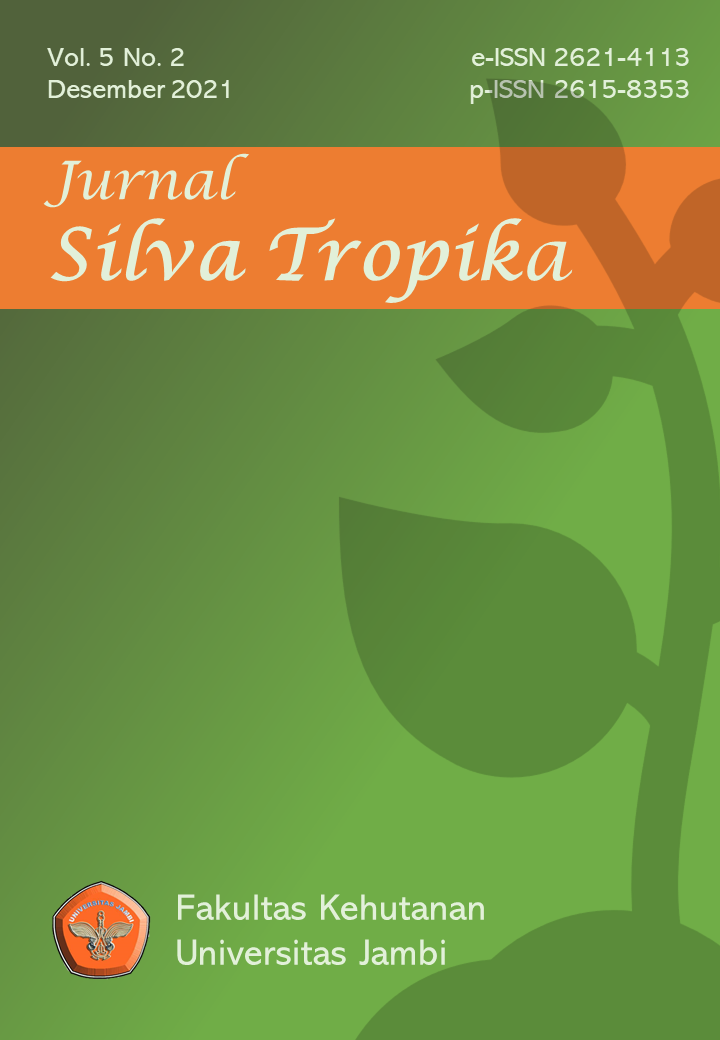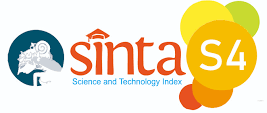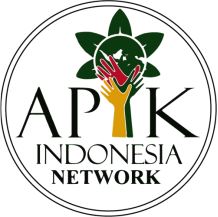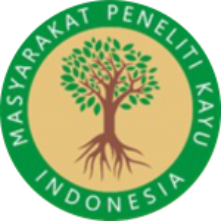KOMPONEN FAKTOR ABIOTIK LINGKUNGAN TEMPAT TUMBUH PUSPA (Schima wallichii DC. Korth) DI KAWASAN HUTAN ADAT BULIAN KABUPATEN MUSIRAWAS
Components Of Environmental Abiotic Factors Where Grow Puspa (Schima wallichii Dc. Korth) In Bulian Traditional Forest Area Musirawas District
DOI:
https://doi.org/10.22437/jsilvtrop.v5i2.14566Abstract
The puspa plant (Schima wallichii) is a tree species that is widely used as building raw material, producing firewood, making paper, furniture industry, animal feed, traditional herbal medicine and producing dyes. Puspa Plants in the Bulian Customary Forest Area Grows in environmental conditions with a flat topography, namely at a slope of 0%-5%, alluvial soil type, pH conditions ranging from 5-6 and brown soil color, clay texture, dusty clay, to dusty clay loam with a percentage of 2%-9% sand per ticket, 21%-64% dust particles and clay particles ranging from 33%-75%. The nutrient content of N ranges from 0.15% - 0.2%; nutrient K ranges from 0.01% - 0.02%; nutrient Ca ranges from 0% - 0.06%; Mg nutrients ranged from 0.01% - 0.04% and P nutrient content from 4.64 me/100g to 17.27 me/100g. While the abiotic component of climatic factors, puspa plants grow in environmental conditions with daily light intensity ranging from 112.25 lux - 2156.25 lux, temperature and humidity ranging from 28.30C - 30.60C while daily humidity ranges from 85.25% - 96.25%.Keywords: Abiotic Factors, Puspa Plant (Schima wallichii), Bulian Traditional Forest
Downloads
References
Cahyono E. 2014. Pengelolaan Hutan Adat Bulian di Kabupaten Musirawas. Kesatuan Pengelola Hutan Produksi (KPHP) Lakitan. Lubuk Linggau Sumatra Selatan.
Goldsworthy PR dan Fisher NM. 1984. The Physiology of Tropical Field Crops. New York: John Wiley & Sons Ltd. Fisiologi Tanaman Budidaya Tropik. 1992. Penerjemah: Tohari, penyunting: Soedharoedjian. Yogyakarta: Gadjah Mada University Press. Dalam Hermawan R, Hikmat A dan Kartono AP. 2012. Analisis Faktor Ekologi Tumbuhan Langka Rotan Beula Ceratolobus Glaucescens Blume Di Cagar Alam Sukawayana Sukabumi Jawa Barat. Media Konservasi Vol. 17, No. 2: 94 – 110
Handoko. 1995. Klimatologi Dasar. Pustaka Jaya. Bogor. Jawa Barat
Hardjowigeno S. 2011. Ilmu Tanah. Akademika Pressindo. Jakarta. 288.
Ibadurohmah N. 2016. Pola Penyebaran Dan Regenerasi Jenis Puspa (Schima Wallichii (Dc.) Korth.) Di Resort Selabintana, Taman Nasional Gunung Gede Pangrango. (Skripsi). Bogor (ID) : Institut Pertanian Bogor.
Jayadi EM. 2015. Ekologi Tumbuhan. Cetakan Pertama. Institut Agama Islam Negeri (IAIN) Mataram. Mataram.
Martawijaya A, Katsunaya I, Mandang YI, Prawira SA, Kadir K. 1989. Atlas Kayu Indonesia. Jil. 2: 109-113. Balitbang Kehutanan Dephut. Bogor
Purnama H, Jumani, Biantary MP. 2016. Inventarisasi Distribusi Tegakan Puspa (Schima Wallichii Korth) Pada Berbagai Tipe Kelerengan Di Kebun Raya Unmul Samarinda (Krus) Provinsi Kalimantan Timur. Jurnal Agrifor. Vol (15). No 1. Hal 55-65
Sulaeman, Suparto, Eviati. 2005. Petunjuk Teknis Analisis Kimia Tanah, Tanaman, Air dan Pupuk. Balai Penelitian Tanah. Badan Penelitian dan Pengembangan Pertanian. Depertemen Pertanian. Bogor.
Wibowo A. 2003. Permasalahan dan Pengendalian Kebakaran Hutan di Indonesia. Review Hasil Litbang. Pusat Penelitian Pengembangan Hutan dan Konservasi
















